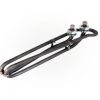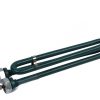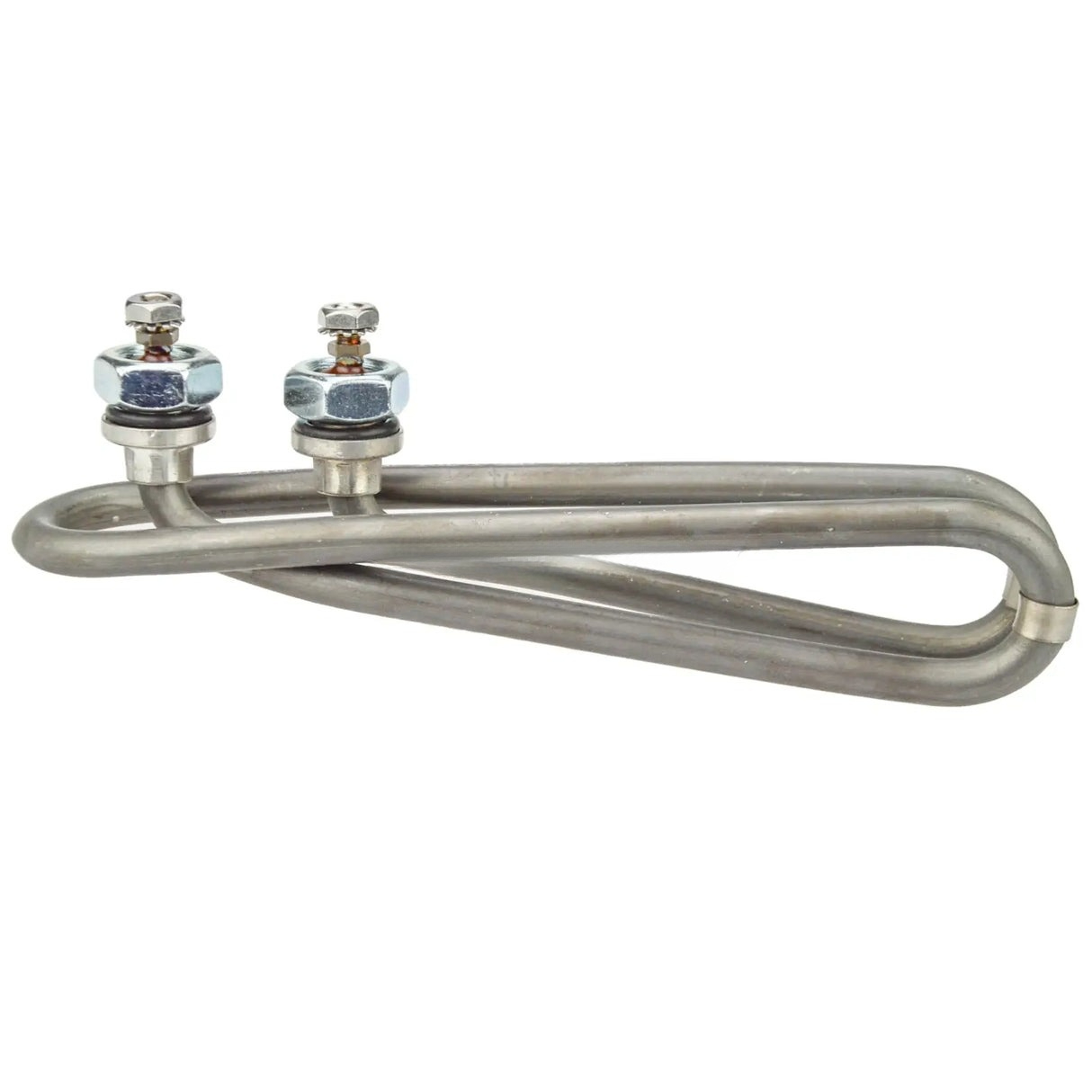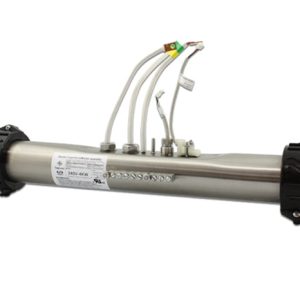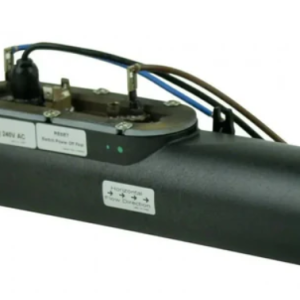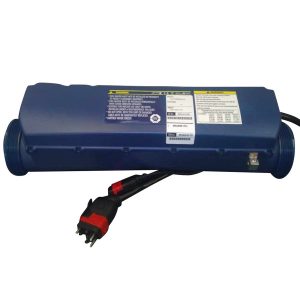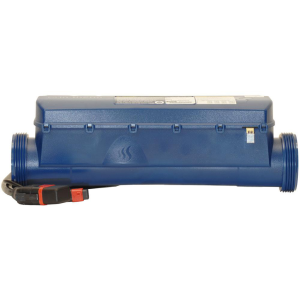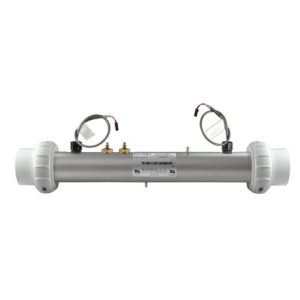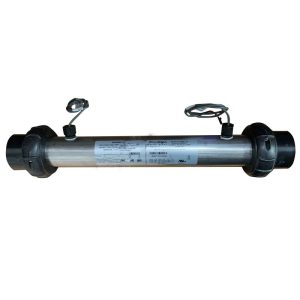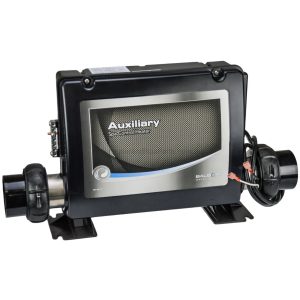3.6KW Heater Element Titanium 7″
£55.41 Inc VAT
4 in stock
3.6KW Titanium Heater Element: Elevate Your Hot Tub Experience
Introduction
As a dedicated hot tub enthusiast and spare parts supplier, I’m thrilled to offer you the 3.6KW Titanium Heater Element. This 7-inch powerhouse is designed to keep your hot tub at the perfect temperature, ensuring your relaxation is never compromised.
Why Choose This Titanium Heater Element?
Unmatched Durability
Titanium heater elements are the gold standard in the hot tub industry. Their exceptional longevity and durability make them a top choice for both manufacturers and discerning hot tub owners alike.
Corrosion Resistance
Unlike standard Incoloy or coated elements, titanium offers superior resistance to corrosion, especially in salt water environments. This makes it an ideal choice for those using salt water systems in their hot tubs.
Versatile Compatibility
This element is a true all-rounder, compatible with a wide range of hot tub brands including Balboa, HydroQuip, Gecko, Thermcore, Aquatemp, RMF, Spa Builders, and Brett Aqualine. It’s the perfect replacement part to keep your hot tub running smoothly.
Technical Specifications
To help you make an informed decision, here’s a detailed breakdown of the element’s specifications:
| Specification | Detail |
|---|---|
| Power Output | 3.6 KW |
| Voltage | 230V |
| Frequency | 50 Hz |
| Amperage | 13.5 – 14.5 Amps |
| Length | 178 mm |
| Diameter | 60 mm |
| Distance Between Terminals | 33 mm |
| Connections | 2 x 19mm nuts for secure fixing |
Installation Tips
While this element is designed for easy replacement, there are a few key points to keep in mind:
- Always ensure the heater tube is primed with water before switching on the unit. This simple step can prevent potential damage or burnout of the element.
- The element is secured in place with two 19mm nuts, making installation straightforward for those comfortable with basic hot tub maintenance.
A Word of Caution
As with any hot tub component, proper installation and maintenance are crucial. Always consult your hot tub’s manual or a professional if you’re unsure about the installation process.
Limited Availability
I want to be transparent with you – due to changes in demand, this particular model will only be available while current stock lasts. If you’re considering upgrading your hot tub’s heating element, now might be the perfect time to make the switch to titanium.
Conclusion
The 3.6KW Titanium Heater Element represents the pinnacle of hot tub heating technology. Its durability, corrosion resistance, and wide compatibility make it an excellent choice for maintaining your hot tub’s performance. Whether you’re replacing an old element or upgrading to titanium, this product offers the reliability and efficiency you need for countless hours of hot tub enjoyment.
Hot Tub Heater Element Replacement; What are the symptoms a hot tub heater element needs replacing?
There are several symptoms that may indicate a hot tub heater element needs replacing. Here are some common signs to watch out for:
Inadequate Heating:
If you notice that your hot tub water is not reaching the desired temperature or is taking much longer to heat up than usual, it could be a sign of a failing heater element. The element may not be generating enough heat or may be malfunctioning, resulting in insufficient heating of the water.
Fluctuating Temperature:
If the hot tub water temperature fluctuates inconsistently, going from hot to cold or vice versa, it could indicate a problem with the heater element. It may be struggling to maintain a steady temperature due to a damaged or faulty element.
No Heating: If your hot tub water remains cold even when the heater is running, it’s likely that the heater element has failed completely. This can occur due to a burnt-out element or a break in the electrical connection.
Tripping Breakers:
If the hot tub’s electrical breaker frequently trips or the GFCI (Ground Fault Circuit Interrupter) is constantly triggered, it could be a sign of a faulty heater element. Electrical issues within the element can cause short circuits or excessive power draw, leading to breaker trips.
Visible Damage:
Inspect the heater element visually for any visible signs of damage, such as cracks, breaks, or corrosion. Physical damage to the element can affect its performance and reliability.
It’s important to note that these symptoms can also be indicative of other hot tub issues, such as problems with the thermostat or the control board. Therefore, it’s recommended to consult a hot tub professional or refer to the manufacturer’s troubleshooting guide to accurately diagnose the cause of the problem.
If you suspect that the heater element is the culprit behind the issues you’re experiencing, it may be necessary to replace the element. Consult the manufacturer’s guidelines and specifications to ensure you select the correct replacement element for your hot tub model.
At Parts4Tubs.com, we offer a wide range of hot tub heater elements, including compatible options for various hot tub brands and models. Replacing a faulty heater element will help restore proper heating performance and ensure an enjoyable hot tub experience.
Hot Tub Heater Element Replacement; How do I replace a hot tub heater element?
Replacing a hot tub heater element is a task that requires careful attention and adherence to safety guidelines. Here is a step-by-step guide to help you through the process:
Preparation:
- Turn Off Power: Before starting any work, ensure that the power to the hot tub is turned off at the circuit breaker. This step is crucial for your safety and to prevent electrical shocks.
- Gather Tools and Materials: Collect the necessary tools and materials for the replacement, including a compatible replacement heater element, wrenches, screwdrivers, multimeter, and Teflon tape (if required).
Removal of Old Heater Element:
- Drain the Hot Tub: Completely drain the hot tub to a level below the heater element. Follow the manufacturer’s instructions or consult your hot tub’s manual for the proper draining procedure.
- Access the Heater Assembly: Remove any access panels or covers to reach the heater assembly. These panels are typically located near the equipment area of the hot tub.
- Disconnect Electrical Connections: Carefully disconnect the electrical connections from the old heater element. This includes disconnecting the power supply wires and any other wiring connected to the element. Take note of the wire colors and their corresponding terminals for reconnection.
- Remove the Mounting Hardware: Loosen and remove any mounting brackets, clamps, or screws holding the heater element in place. Keep track of the hardware for reinstallation.
- Extract the Old Heater Element: Gently slide or wiggle the old heater element out of its housing. Be cautious not to damage surrounding components or plumbing.
Installation of New Heater Element:
- Apply Teflon Tape (If Required): If your replacement heater element requires Teflon tape, wrap the threaded portion of the element with a few layers of tape in a clockwise direction. This will help create a watertight seal when installed.
- Insert the New Heater Element: Carefully insert the new heater element into the housing, aligning it with the mounting holes or brackets.
- Secure the Mounting Hardware: Reattach the mounting brackets, clamps, or screws to secure the new heater element in place. Ensure that it is firmly positioned and properly aligned.
- Reconnect Electrical Connections: Reconnect the electrical connections to the new heater element. Follow the color-coded wires and their corresponding terminals. Double-check the connections to ensure they are tight and secure.
- Test the Heater Element: Before proceeding, ensure that all electrical connections are properly secured. Turn on the power supply and test the heater element using a multimeter to verify voltage and resistance readings (if applicable). Refer to the manufacturer’s instructions for specific testing procedures.
- Close and Seal: Once the heater element is installed and tested, close the access panels or covers and ensure they are securely fastened.
- Refill the Hot Tub: Refill the hot tub with water, following the manufacturer’s instructions or consult your hot tub’s manual for the proper filling procedure.
- Restore Power and Test: Turn on the power supply at the circuit breaker and power up the hot tub. Monitor the heater element to ensure it is functioning correctly and producing heat.
| Part# | HTP2743 |
|---|
Related products
Heating
Heating

